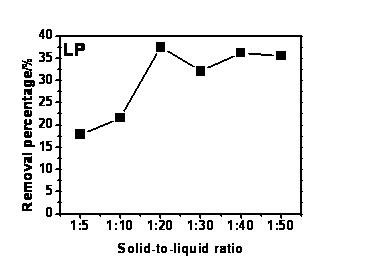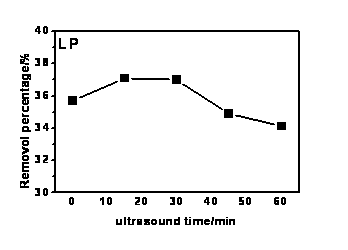Preparation method of modified pollen and application thereof for absorbing and treating EDCs of water
A pollen and modification technology, which is applied in the fields of adsorption water/sewage treatment, chemical instruments and methods, and other chemical processes, can solve the problems of high cost, few surface functional groups, secondary pollution, etc., and achieves low cost and high adsorption. , a wide range of effects
- Summary
- Abstract
- Description
- Claims
- Application Information
AI Technical Summary
Problems solved by technology
Method used
Image
Examples
Embodiment 1
[0144] Add 20g of natural lotus pollen to 200mL of absolute ethanol, and put it into ultrasonic washing to remove impurities contained in the pollen. After solid-liquid separation, pour off the ethanol solution in the upper layer, put it into a drying oven and dry it completely at 60°C. Grind the dried lotus pollen into small particles with a pulverizer, take 10 g through an 80-mesh sieve and add it to 200 mL of concentrated hydrochloric acid, disperse ultrasonically for 20 min, then reflux for 7 h, filter with a Buchner funnel, wash with ultrapure water until neutral , placed in an oven to dry at 60°C, and the obtained powder is the modified lotus pollen adsorbent.
[0145] Take 10mg of modified lotus pollen adsorbent and add to the concentration of target pollutant BPA to 10mg L -1 In the solution, shake at 25°C and 200rpm for 8h to carry out the adsorption experiment. The removal rate of BPA reached 41.4% after shaking adsorption.
Embodiment 2
[0147] Add 20g of natural lotus pollen to 250mL of absolute ethanol, put it into ultrasonic washing to remove impurities contained in the pollen. After solid-liquid separation, pour off the ethanol solution in the upper layer, put it into a drying oven and dry it completely at 60°C. Grind the dried lotus pollen into small particles with a pulverizer, take 10 g through a 80-mesh sieve and add it to 300 mL of concentrated hydrochloric acid, disperse ultrasonically for 15 minutes, and then reflux for 9 hours. After washing to neutrality, put it into an oven and dry at 60°C, and the obtained powder is the modified lotus pollen adsorbent.
[0148] Add 10 mg of modified lotus pollen adsorbent to the target pollutant BPA concentration of 10 mg L -1 In the solution, shake at 25°C and 200rpm for 8h to carry out the adsorption experiment. The removal rate of BPA reached 45.5% after shaking adsorption.
Embodiment 3
[0150] 20g of natural apricot flower pollen was added to 400mL of absolute ethanol, and put into ultrasonic washing to remove impurities contained in the pollen. After solid-liquid separation, pour off the ethanol solution in the upper layer, put it into a drying oven and dry it completely at 60°C. The dried apricot flower pollen is crushed into small particles with a pulverizer, and passed through a 80-mesh sieve for later use. Take 10g of washed apricot flower pollen and add it to 400mL concentrated hydrochloric acid for ultrasonic dispersion for 2min, reflux for 9h, filter the refluxed product with a Buchner funnel, wash with ultrapure water until neutral, put it in an oven at 80°C and dry it to obtain a powder It is the modified apricot flower pollen adsorbent.
[0151] Add 10 mg of modified apricot flower pollen adsorbent to the target pollutant BPA concentration of 10 mg L -1 in solution. Adsorption experiments were carried out in a shaker at 25°C and 200rpm for 8h. ...
PUM
 Login to View More
Login to View More Abstract
Description
Claims
Application Information
 Login to View More
Login to View More - R&D
- Intellectual Property
- Life Sciences
- Materials
- Tech Scout
- Unparalleled Data Quality
- Higher Quality Content
- 60% Fewer Hallucinations
Browse by: Latest US Patents, China's latest patents, Technical Efficacy Thesaurus, Application Domain, Technology Topic, Popular Technical Reports.
© 2025 PatSnap. All rights reserved.Legal|Privacy policy|Modern Slavery Act Transparency Statement|Sitemap|About US| Contact US: help@patsnap.com



